View current page
...more recent posts
At Diapason in midtown on Thursday, five analog synthesists concocted a fascinating sonic stew for Analogos, an ongoing series of live improvisational jams. This was Analogos 9; unlike 7, featuring small sets with different combinations of the musicians, this was two long pieces by all. The first stopped rather dramatically when a power strip blew (it sounded like an intentional climax), and the second built slowly to a nerve shattering asynchronous finale. For some reason I kept thinking of Ornette Coleman, mixed with the raucous boom of the Velvet Underground playing the psychiatrist's convention in New Jersey (footage of which recently surfaced on YouTube and it's basically metal machine music & Nico). Trying to figure out who did what in all the crisscrossing sound overlays presented a challenge, but one could safely guess that Kabir Carter's newish Moog and Moogerfooger pedals contributed some of the pure, forcefully detuned pitches, that Stefan and Sergei Tcherepnin's battered Serge modulars added a scratchy, popping-patch-cord frisson, that Ed Tomney's EMS Synthi spun out the distinctive whooshes and trilling sequences of that classic instrument--and to be honest, I knew when Michael J. Schumacher's Steiner-Parker Synthacon chimed in mainly because I had a good line of sight to him from my seat on the carpeted floor. It's sort of funny these days that tonality and anything digital could get you kicked out of any club but it's thrilling to hear these vintage sounds revving at full jet engine volume.
The gallery stable for Schmulke Bruengross looks interesting. I want to go there next time I'm in Munich.
Cindy Sherman vs T shirt ninjas
Untitled Film Stills, 1979:

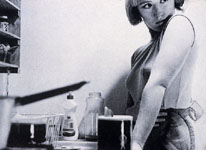
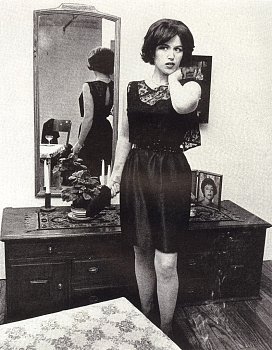
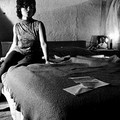







Webcam Ninjas, ca. 2002:












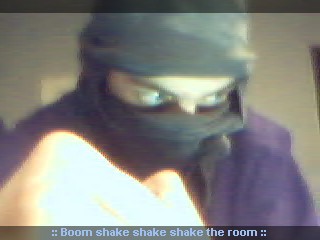










"You Have No Choice (Speedy)" [mp3 removed]
More VVork.
Sally McKay's comment about the blog's specialty--"elegant sculptural installations crafted well from non-precious materials with interesting but tidy content and an unquestioning relationship to art institutions," pretty much nails it. She says she loves/hates the site and that's what I've been saying but the unceasing tide of conceptual projects is starting to get painful. It's depressing because you see artists trying so hard, all over the world, to make their conceptualist schtick--based mostly on '70s premises but with a digital gloss--projects that document well and photograph well and might catch the eye of a curator (or omnibus art blog)--and when you show them all together like this it starts to look like a disease. Please, make it stop (or vary it with some videos of cats and sloths from YouTube)!
Update: The comment thread is now closed (to all but steve, who has magic powers) but worth a read, thanks to all who contributed, will try to synopsize some of what was said for a later post--the topic is bigger than just picking on VVork and gets into by-the-numbers conceptualism and its relation to computer workflow.
Amazon changes "crappy" to "cr*ppy"
In her Salon column Camille Paglia writes about a book that sounds fairly interesting:
Finally, I read a fabulous book last week -- John Lauritsen's "The Man Who Wrote Frankenstein," which will be published in May by the gay-themed Pagan Press, based in Dorchester, Mass. Lauritsen, who is known for his work in gay history and for his heterodox views of the AIDS epidemic, sent me an advance copy, which arrived as I was on my way to midterm exams. Its thesis is that the poet Percy Bysshe Shelley, and not his wife, the feminist idol, Mary Shelley, wrote "Frankenstein" and that the hidden theme of that book is male love.Amazon excerpts this as a review, and changes "crappy" to "cr*ppy." It's OK to take down a feminist idol and suggest for the first time that a major work in the romantic canon has a gay theme and make fun of establishment scholars as long as you don't use potty words.
[...] Lauritsen's book is important not only for its audacious theme but for the devastating portrait it draws of the insularity and turgidity of the current academy. As an independent scholar, Lauritsen is beholden to no one. As a consequence, he can fight openly with myopic professors and, without fear of retribution, condemn them for their inability to read and reason.
This book, which is a hybrid of mystery story, polemic and paean to poetic beauty, shows just how boring literary criticism has become over the past 40 years. I haven't been this exhilarated by a book about literature since I devoured Leslie Fiedler's iconoclastic essays in college back in the 1960s. All that crappy poststructuralism that poured out of universities for so long pretended to challenge power but was itself just the time-serving piety of a status-conscious new establishment. Lauritsen's book shows what true sedition and transgression are all about.
Lauritsen assembles an overwhelming case that Mary Shelley, as a badly educated teenager, could not possibly have written the soaring prose of "Frankenstein" (which has her husband's intensity of tone and headlong cadences all over it) and that the so-called manuscript in her hand is simply one example of the clerical work she did for many writers as a copyist. I was stunned to learn about the destruction of records undertaken by Mary for years after Percy's death in 1822 in a boating accident in Italy. Crucial pages covering the weeks when "Frankenstein" was composed were ripped out of a journal. And Percy Shelley's identity as the author seems to have been known in British literary circles, as illustrated by a Knights Quarterly review published in 1824 that Lauritsen reprints in the appendix.
The stupidity and invested self-interest of prominent literary scholars are lavishly on display here in exchanges reproduced from a Romanticism listserv or in dueling letters to the editor, which Lauritsen forcefully contradicts in acerbic footnotes. This is a funny, wonderful, revelatory book that I hope will inspire ambitious graduate students and young faculty to strike blows for truth in our mired profession, paralyzed by convention and fear. (emphasis supplied)
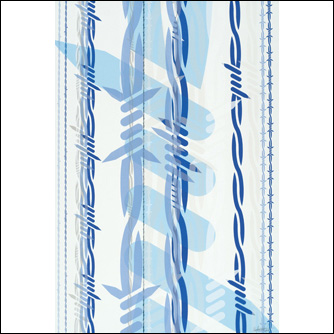
This jpeg of a print by Ryan McGinness comes from Paddy Johnson's blog. She's talking about the marketing of this image and this artist and it's worth a read to show you the mechanics of the hype and real estate and brand-building. I'm posting it on a slightly different topic, which is the "defaults" school of digital art. This strikes me as a very good example. It's got the flat "Adobe Illustrator look" but this artist doesn't make any bones about it. It's a preset, and he is using it very well. There's no getting around the content, either--any collector who buys the print will be looking through a prison camp fence, stylishly dressed up and tastefully layered as it might be. Several years ago I wrote about an installation by McGinness in a gutted building, soon to be renovated, on Lafayette--it also didn't hide the digital "facture." It was kind of the reverse of the above image--instead of a bleak adornment of a tony loft, the Lafayette show presented slick product logos on the inside of a "pre-owned" structure.
This post could probably read in tandem with one on Nasty Nets showing the similarity of some recent work by abstract/conceptual photographer James Welling and an Adobe Illustrator promotional graphic. Compare and contrast the relations of artists to well-known imaging software.
It could also be read together with my short interchange with a commenter about the use of presets in music (or more specifically the familiar interface Cubase.)
Recently relistened to Slapp Happy's Sort of, a gem from the early '70s that got extremely limited release in the '80s and is apparently available again after many years. Peter Blegvad has a Jonathan Richman/Lou Reed ish voice here and I don't know how to describe Dagmar Krause's except distinctive and pretty--certainly less emphatic on this LP than her later work with Henry Cow. The songs would be called indie today and they don't sound the least bit dated to me--according to the amazon review, at the above link, "Opal use to do a stoked cover of 'Blue Flower' live; their Mazzy Star reincarnation recorded it less successfully about ten years ago and never bothered to credit Slapp Happy." "Small Hands of Stone" and "Little Girls World" are a couple of my favorites. Some members of the German avant group Faust play on a few songs but again, there's nothing particularly prog or even psych about these tunes--some are country-inflected, others Feelies-ish. Solid songwriting, good singing & playing and smart lyrics. Worth grabbing if you come across it.
